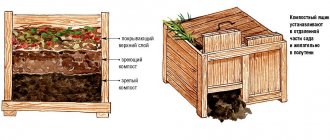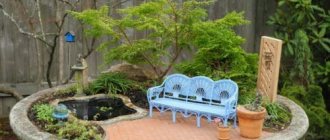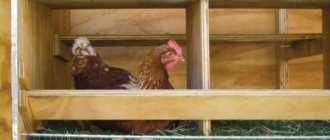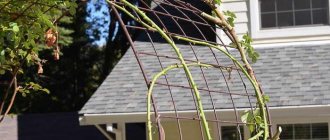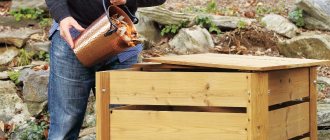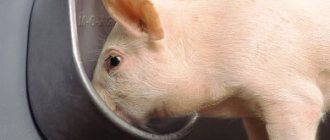Basic housing requirements for an African hedgehog
The African hedgehog is very sensitive to temperature changes. You need to keep your pet away from drafts and heating devices. The cage cannot be placed on the floor or on a window. A cabinet or table on which it fits completely is suitable. The best temperature for a hedgehog is 23-25°C.
Particular attention should be paid to the size of the cell. A hedgehog needs at least half a meter of free space, not occupied by accessories. The distance between the wheel and the top of the cage is at least 6-10 centimeters.
The ideal size is 60*90 in area. The greatest distance between the bars of the cage is about 2-2.5 centimeters.
The surface of the home must be flat. If the bottom of the cage is made of mesh or lattice, the animal will injure its paws, and it is also poor protection from cold and drafts.
The cage should deprive the hedgehog of any opportunity to get out on his own, because a curious animal will definitely try to do this.
The big world is fraught with a lot of dangers for a small and defenseless hedgehog: he can find food on the floor and eat it that is harmful and even deadly to himself, or even run away and get lost. Needless to say, what will happen if you have other animals, such as a dog.
If your pet's cage consists of several floors, there must be safe passages between them. For example, a solid (in no case lattice!) ladder with sides a couple of centimeters taller than the height of the hedgehog, or a pipe twice as wide as the animal, so that it does not get stuck and can turn around in it.
The upper floors of the cage should be the same size as the lower floor. Otherwise, the hedgehog will not use the transitions, but will jump off the shelves and may harm itself, breaking a limb, and even die.
It is important that the cage is well ventilated and retains heat. This is a necessary condition for the good health of your pet.
Now you have to take into account all the requirements and choose the ideal home for the hedgehog.
Which hedgehog is suitable for an apartment?
If you meet a hedgehog in the forest, say hello to it and pass by. Do not flatter yourself with the hope that a wild forest pet will become your good friend and will be able to get used to life at home.
dwarf African hedgehogs , are best suited for keeping in an apartment.
. The latter are a special breed artificially bred by man. African pygmy hedgehogs do not trample, do not have an unpleasant odor, and eat ready-made cat food with great pleasure. They do not hibernate, and their summer regime is not much different from winter.
With good care, pygmy hedgehogs live for about 5 years; they are very attached to humans and are completely unsuited to life in the wild.
As for long-eared hedgehogs, as the name of the breed suggests, their distinctive feature is their long 5-centimeter ears, which funny stick out in different directions.
Eared hedgehogs
They love warmth very much, drafts are dangerous for their lives. The breed of these animals is listed in the Red Book. The lifespan of pets can reach up to 10 years.
There are other breeds of hedgehogs that are suitable for home keeping. But if you decide to have such an exotic pet, do not buy it at the market. Contact breeders, of whom there are many today, to be sure that the hedgehog is young and healthy.
How to choose a cage for an African hedgehog
One of the most common options is a cage. When choosing one, it is important to remember all the requirements for the African hedgehog’s abode, because there are a huge number of different cages, but not all of them meet the animal’s safety conditions.
A cage designed for rabbits and guinea pigs is suitable for the animal. The main thing is that its size is at least 60*90, and the width of the mesh is 2 centimeters, otherwise the young individual may get stuck between the bars and seriously damage the internal organs. A wider net will allow the hedgehog to escape.
It is important that the cage is easy to disassemble. Thanks to this, you can always get your pet or pick up accessories, keep your home clean, and the cage itself will be easy to wash.
One of the most popular - the company produces high-quality cages that are well suited for dwarf hedgehogs. They are made of safe material and are easy to use.
Photos of hedgehog crafts
Read here - Crafts from matchboxes: original ideas and real photos of collections of beautiful crafts for boys and girls (105 photos)
Did you like the article?
0
Features of the dune, how to adapt it for a hedgehog
An alternative to a cage is a dune. Finding a suitable one for an African hedgehog is quite difficult, since their size is usually smaller than necessary. Such a home is well suited for hedgehogs who climb on bars, or for those who have diseases of the musculoskeletal system or brain, or injuries.
However, the dune as a home for the African hedgehog has its drawbacks: it is too low.
To put a running wheel in it, you will have to leave it without a lid, and this, in turn, can lead to the animal escaping or other pets being able to harm it. The dune is poorly ventilated, which is also a significant drawback.
Health and life expectancy
In their natural environment, wild hedgehogs rarely live more than 5 years. They die from disease, hunger, or become victims of predators. Some animals that hibernate do not come out of it and die. If you bring home a forest hedgehog, it is unlikely to live for many years, despite good care. The immunity of such an animal is already undermined by numerous diseases, and it is almost impossible to tame an animal from the forest.
Ornamental hedgehogs live longer, primarily due to the lack of threat from wild animals. The average lifespan of the animal is 10-12 years. A loving owner can extend the life of a pet by creating comfortable conditions for it and preparing a properly balanced diet. There are cases where pet hedgehogs lived for more than 15 years because they were well cared for.
Is it possible to live in a plastic container?
A plastic container is a budget-friendly housing option for your African hedgehog, but it will take a little effort to make it suitable for your pet.
It will be too difficult to find a container that is spacious enough, but you can go about arranging your home creatively: for example, take a couple of containers, no less than twice the height of a standing hedgehog, and connect them with a transition - a wide pipe.
The plastic from which the container is made must be safe and free of chemical odor. You can purchase ones designed for children's bedrooms.
It would be good if the container had a lid. This will protect the hedgehog from other animals and will not allow him to get out. To ensure air circulation inside the container, you need to make holes from 2.5 to 3 centimeters in diameter in the lid and around the entire perimeter.
Material
Use old wooden fruit and vegetable boxes and line them with mesh inside. Iron cans for paint or canned food are also suitable, but only dried ones, without any foreign odors. It is better to grind off their sharp edges so that the bees cannot be injured by them.
But, of course, the most beautiful option can be considered a small rectangular “box” without an outer wall.
You will need: 4 parts equal in length and width; you can make them yourself from crossbars, scraps of skirting boards, old window frames and other available “construction waste”. These details will become a kind of frame, their width will be equal to the depth of the “hotel”. We also need a back cover for our hotel, which can be attached to the “frame” with screws or a glue gun. For “sections” additional crossbars of equal width will be needed.
You can make an imitation of a “roof” by attaching some tiles on top of the hotel, and decorate the house with the inscription “Bee hotel” burned into wood. It is important not to get too carried away: the bees will be uncomfortable flying into a house that smells of paint and glue. Remember: the main thing is that the materials are as natural as possible. For durability, stain the wooden parts; they will acquire one shade.
Photo: Shutterstock.com
Homemade pen cage
You can make a home for a hedgehog with your own hands. It will be cheaper, and you can also arrange the cage according to your own preferences. Do not forget that you will need to take into account the necessary requirements for the pet’s “home”.
The pen cage can be made from mesh blocks with high sides made of plastic or glass, which will not allow the animal to climb up the mesh and escape or get stuck in it. It is better to arrange such an enclosure on a table or cabinet.
The pen can also be placed on the floor if you are completely sure that it is warm and the enclosure will be protected from drafts and will be safe from other pets.
Lifestyle
Hedgehogs feed mainly on insects and their larvae, they eat the cockchafer and wireworm, and do not disdain slugs and mice. They can also bite a viper, bravely engaging in single combat with it. As a "orderly" they are extremely desirable in the garden. But in an overly manicured garden, where there is nowhere to hide, they, of course, will not like it. Favorite habitats are light forest edges, dry glades, impenetrable thickets of bushes - rose hips, barberries (see photo 1), hawthorn.
EVERYTHING YOU NEED FOR THIS ARTICLE IS HERE >>>
If you want a hedgehog to settle next to you, do not mow the grass in secluded corners of the garden, do not remove piles of leaves and brushwood in the fall: they can become a wintering place for the hedgehog. Having built up fat reserves over the summer, when cold weather sets in, it goes into suspended animation, the body temperature drops to + 1.8 ° C. It can remain in this state for up to 240 days!
Showcase-rack as a home for the African hedgehog
A display rack will be an unusual and convenient home for a hedgehog. Its design will allow you to keep several hedgehogs in one place, isolated from each other. You can also store all your pet's accessories here.
You won’t find a house like this in a store—it’s made to order, but it won’t be cheap. For the rack you need to choose high-quality and environmentally friendly materials. When making a home, it is important to take into account all the safety and convenience requirements of the African hedgehog: correct transitions, good ventilation, durable doors.
Is it possible to keep a hedgehog without a cage, free-range?
An African hedgehog cannot live without a cage. The animal can crawl under furniture, hide and get stuck there. If the floor in your house is not perfectly clean, the hedgehog will certainly find something dangerous to its health: crumbs and pieces of food, threads and other debris, toxic products.
Due to a draft or low temperature, the animal will get sick. You can also accidentally injure the animal, step on it or drop a heavy object on it, or the hedgehog can get burned on heating devices.
Without its own cage, a pet’s life will be completely uncomfortable and unsafe.
How to do something yourself, with your own hands - home craftsman website
AN EXCELLENT TOOL FOR CRAFTS AND HANDCRAFTS AND EVERYTHING FOR THE GARDEN, HOME AND Cottage LITERALLY FOR FREE - SEE FOR YOURSELF. THERE ARE REVIEWS.
LET'S BUILD A REAL HOME FOR HEDGHOGS!
WE REALLY HOPE THAT THE HEDGEHOGES WILL LIKE US AND THEY WILL DO THEIR JOB - THERE WILL BE A REDUCTION OF MICE, SLUDGES AND CHAPTER BEETLES IN THE GARDEN. AND THE VIPERS WILL HAVE A HARD TIME WHEN WE HAVE SUCH SECURITY This is a cult character in Russian animation. Just remember “Hedgehog in the Fog”. True, they don’t string apples on needles; these are all myths, since they belong to the category of small but predators.
